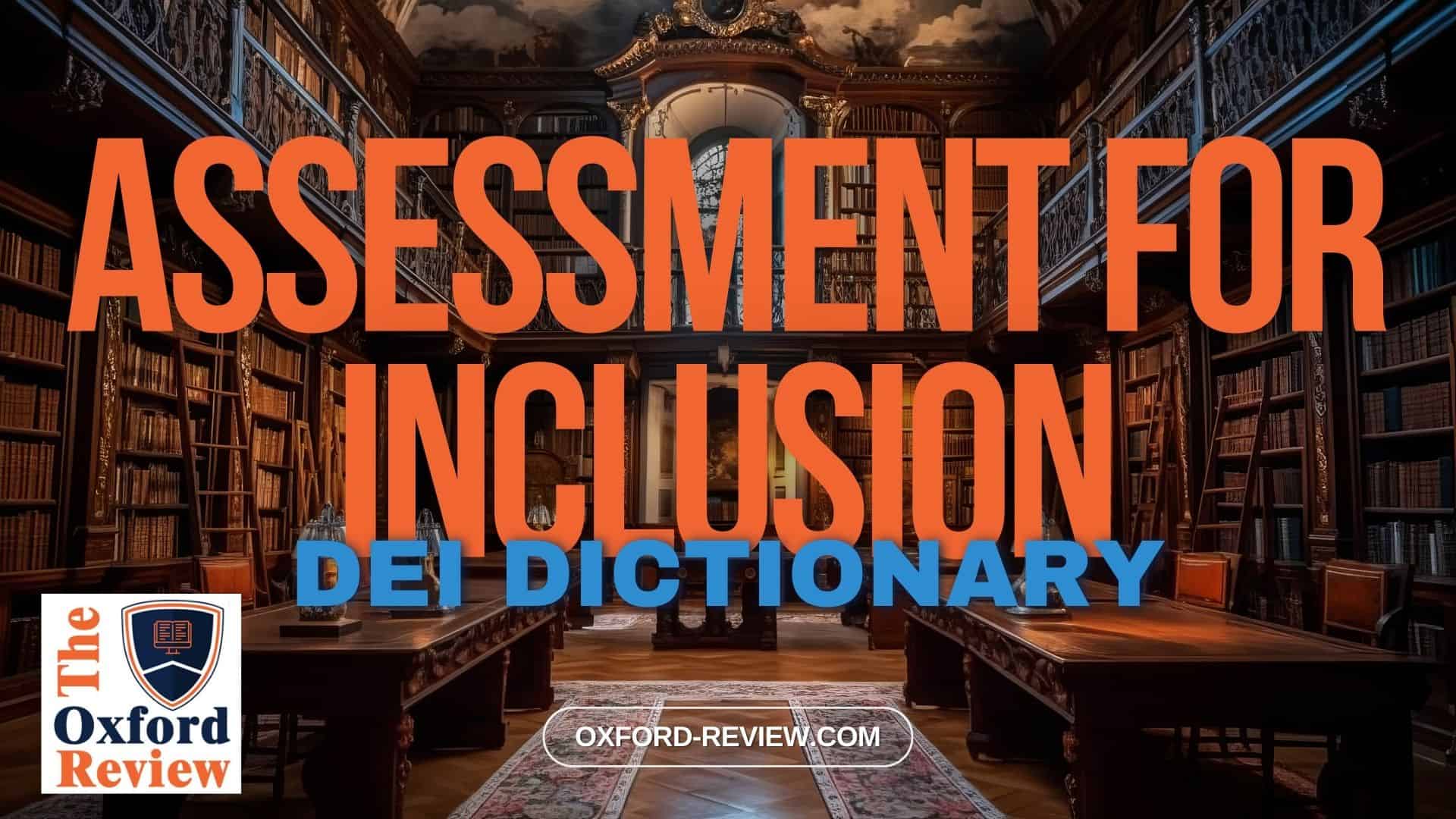Assessment for Inclusion – Definition and Explanation

Understanding Assessment for Inclusion: A Vital Aspect of DEI Initiatives
In the dynamic landscape of today, Diversity, Equity, and Inclusion (DEI) are indispensable for organisational success. Among these, Assessment for Inclusion emerges as a pivotal process for nurturing diverse and inclusive environments.
Definition:
Assessment for Inclusion refers to the systematic evaluation of policies, practices, and culture within an organisation to identify strengths and areas needing improvement regarding diversity, equity, and inclusion. It entails gathering data, analysing demographics, and assessing the experiences of individuals from various backgrounds to ensure that everyone feels valued, respected, and empowered.
Importance:
- Identifying Gaps: Through Assessment for Inclusion, organisations can pinpoint disparities in representation, access to opportunities, and inclusion among different demographic groups. This data-driven approach highlights areas that require attention and resources to promote equity and diversity effectively.
- Driving Accountability: By regularly assessing inclusion efforts, organisations hold themselves accountable for progress. Transparent reporting on assessment findings fosters a culture of accountability and encourages continuous improvement in DEI initiatives.
- Informing Strategy: Assessment for Inclusion provides valuable insights that inform the development of targeted strategies and interventions. Whether it’s implementing training programmes, revising policies, or enhancing recruitment practices, data-driven decisions are more likely to yield meaningful outcomes in fostering inclusion.
- Enhancing Employee Engagement: When employees see their organisation actively engaged in assessing and addressing inclusion, it fosters trust and confidence in leadership. Employees are more likely to feel valued and connected to the organisation, leading to increased engagement and productivity.
Example:
Consider a multinational corporation that wants to assess the inclusivity of its hiring processes. The organisation conducts a comprehensive review of recruitment data, analysing factors such as demographics of applicants, interview-to-hire ratios across different demographic groups, and employee turnover rates. Through this assessment, they identify potential biases in the recruitment process and implement strategies to mitigate them, such as blind resume screening or diverse hiring panels. Over time, the organisation observes a more diverse workforce and improved employee retention, indicating the effectiveness of their inclusion efforts.
Conclusion:
Assessment for Inclusion is not just a box to tick in DEI initiatives; it’s a critical tool for creating environments where diversity is celebrated, equity is upheld, and everyone feels included. By systematically assessing and addressing barriers to inclusion, organisations can foster a culture of belonging where every individual can thrive. Embracing Assessment for Inclusion is not only a strategic advantage but also a moral imperative in today’s diverse world.
References:
Nieminen, J. H. (2024). Assessment for Inclusion: rethinking inclusive assessment in higher education. Teaching in higher education, 29(4), 841-859. https://www.tandfonline.com/doi/full/10.1080/13562517.2021.2021395
Ajjawi, R., Tai, J., Boud, D., & Jorre de St Jorre, T. (2023). Assessment for inclusion in higher education: Promoting equity and social justice in assessment (p. 260). Taylor & Francis. https://library.oapen.org/handle/20.500.12657/60125
Be impressively well informed

Get the very latest research intelligence briefings, video research briefings, infographics and more sent direct to you as they are published
Be the most impressively well-informed and up-to-date person around...
